Oceanhorn is a game that originally released for iOS back in November of 2013 and got console ports on Xbox One and PS4 three years later. Now it’s on the Nintendo Switch, going back ever so slightly to its mobile roots.
Oceanhorn very obviously takes inspiration from The Legend of Zelda series. This is pretty damning because that means there are better games like it to play, especially on consoles.
The story isn’t bad, but could be executed better
The story goes that long ago there was a civilization that thrived on technology, but by going to far they unleashed a powerful evil on the world that left it as a shell of what it once was and eradicating the most technologically advanced civilization. One of the beasts, Oceanhorn, that was unleashed by this evil is alive to this day and hunts down your bloodline. Your father left you to protect you from the Oceanhorn but years later you find you must leave your island to defeat the Oceanhorn and maybe find your father.
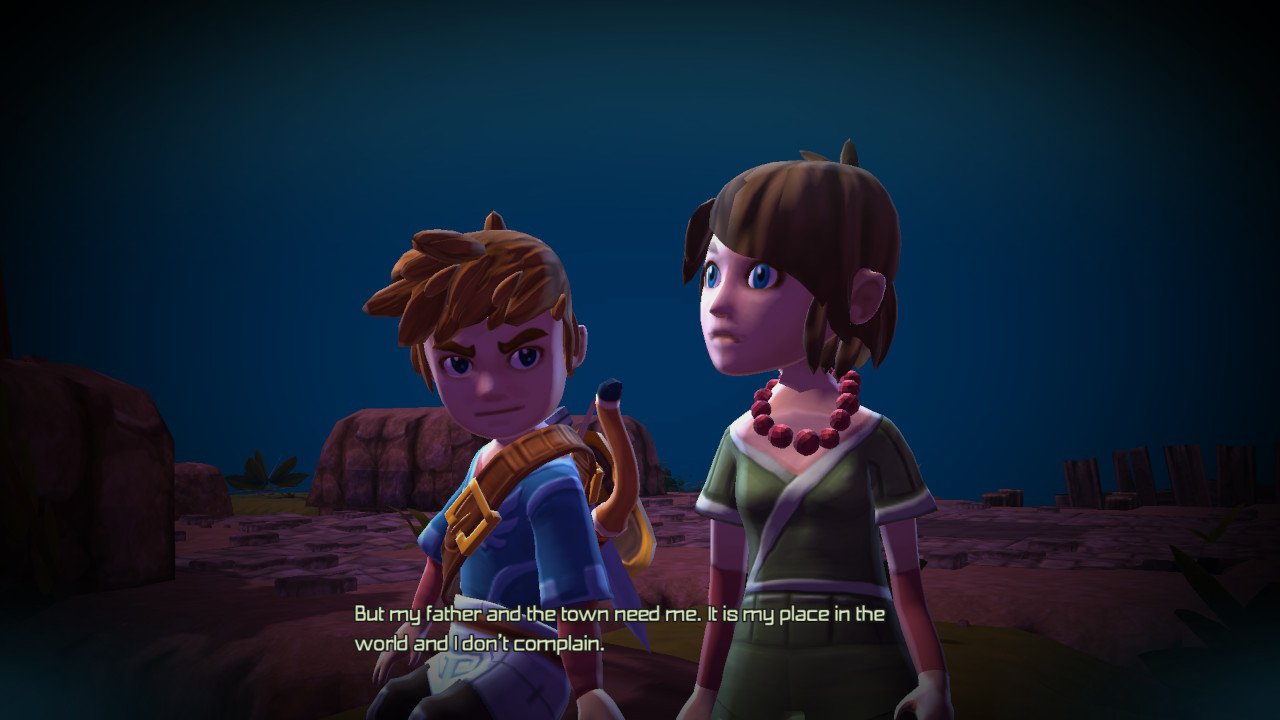
The story has a great premise but the execution isn’t very great. Characters are very forgettable and aren’t given much background. At some point you go to an island where you’re asked to help with a ceremony, you fight a boss, and suddenly you have a love interest.
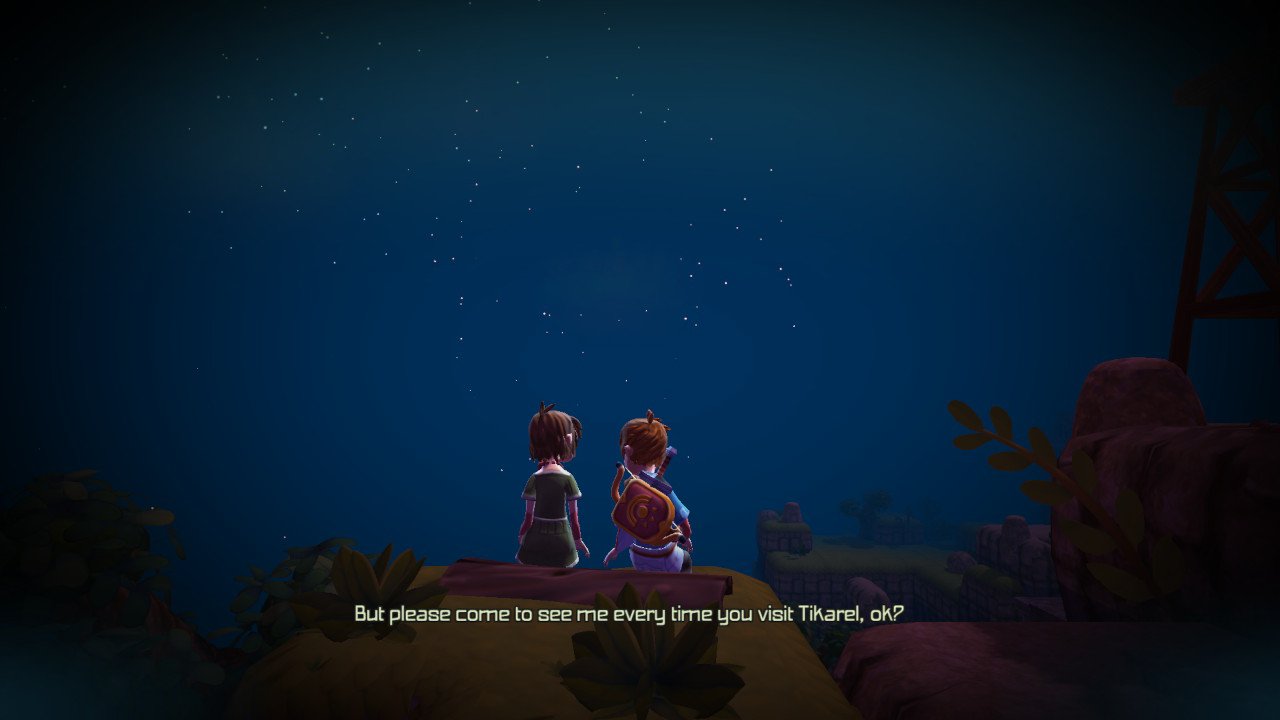
The graphics leave something to be desired
Oceanhorn’s graphics are about what you’d expect from a critically acclaimed mobile game. The textures and models look good and are reused often, but aren’t applied particularly well. This is especially apparent in cut scenes where the camera pans down to the character’s level and you can sometimes catch a few cracks between the models. Occasionally you’ll come across a random object that is difficult to move around for no good reason, such as a log placed in the middle of a cave that you have to squeeze past one way and can’t get by the other way.
The general lack of any background during these cut scenes makes the world feel a lot more empty. You could argue against this point because the whole game takes place on islands. However, the same problem persists in caves too, where the cave walls only go so high and then drop into a flat plane that goes on until the draw distance runs out.
Speaking of islands, the ocean is probably the worst looking thing in the game. It’s depicted as just a shiny reflective surface that wobbles a bit. In a game that features good textures, the lackluster presentation of water feels very out of place with the game’s art style.
Despite the fact that it has areas that could be improved, nothing is particularly bad looking though. Looks are probably where Oceanhorn shines the most. Still, the placement of objects seems random and just generally not thought out at times.
The gameplay is somewhat awkward at times
The gameplay is like a simplified 2D Zelda game. You move around the world with the control stick. There is no jumping, like in most Zelda games. You can drop down from ledges, but only ones that are closer to the ground below. Which feels very limiting. There are times when a ledge is just barely too high to jump off simply because the game wants you to take a longer route.
Among the other movement options is a very wonky dash. You can only dash in a straight line and there’s a long lag between letting go of the button and being able to move normally again. The stamina bar is also very weird, it feels like even if you use more than half of the bar, it seems to drain the whole thing even if it seems like it shouldn’t have. The dash works, but not without problems.
Combat is as bland as bland can get. Swinging your sword will do one of a few random attack motions, which makes randomly attacking enemies difficult. The only other thing you can do with your sword is a spin attack, which you do by holding the attack button down. You have a shield which blocks any damage that hits it when you hold down the button, but it’s not worth it for any enemies except those that actually require your shield, which you can just run past. Combat never evolves beyond these mechanics and gets very old very fast.
Enemies are mostly punching bags and don’t put up much of a fight. When you’re hit or even die it feels less like you’re at fault and more like you where cheated. There’s a very small variety of enemies in the game, most of which just run at you in an attempt to make contact. Boss fights use the usual Zelda formula of “use X item on Y weakness,” so they don’t offer much variety either.
There are some boss fights where the camera lowers and it turns into a sword duel. However these are nothing more than a slap fight. You’re supposed to wait for them to put their shield down and go in for a strike, but when they have their shield up or down is questionable most of the time. You save time by just swinging at them until they go down.
You pick up an assortment of items and magic through the game, such as bombs and a bow. These are better saved for puzzles, unless you really have trouble taking down the bigger enemies.
The puzzles in the dungeons are very simple and rarely challenging. They range from arranging boxes in a way that allows you to pass, to pushing buttons that are slightly out of the way to open a door. Sometimes you’ll need an item for the puzzle, but not very often. An item will rarely see use outside of the dungeon you get it from, which even Zelda has moved away from.
A unique feature of this game are the levels. Completing challenges and killing enemies gives you XP gems which level you up when you collect enough. Leveling up gives you upgrades like higher item capacity or more effective spells but will also occasionally just give you coins. Each island shows you three challenges, but unless it’s specified, you can complete them anywhere. This is an interesting feature that adds a mechanic to a game that usually wouldn’t have it, but because Oceanhorn is a game where you need to progress linearly, levels can’t reward you with much.
Traveling between islands in Oceanhorn looks like how it is in Wind Waker, but extremely bare bones. When you leave an island a map of the world opens up. You select an island and the boat moves on a straight path to your destination. Once you hit level 2, you get a gun on the boat and random clusters of crates, mines, and enemies. The boat section between islands is nothing more than padding, possibly to make the game more like Zelda. The game would be better without it.
Oh, and there’s fishing thrown in. You can sell the fish you catch for money and there’s a fish book you can fill if you’re a completionist. To the games favor, it’s one of the best fishing mini-games I’ve played in awhile. It’s nice and simple.
Oceanhorn is relatively unimpressive and a little dated
Oceanhorn probably worked better as a mobile game back when not much was expected of such games. But as a modern game on consoles there are so many better options. It’s bland combat, promising yet disappointing story, and gameplay padding are all relics of an age of mobile gaming that we’re long past. The graphics, art style, and lore are all good, but that still doesn’t warrant a $15 price tag for an $8 mobile game.
What do you think? Does Oceanhorn still have a place in modern gaming? Leave a comment below and keep your eyes on Gameskinny for more Switch reviews and the like.

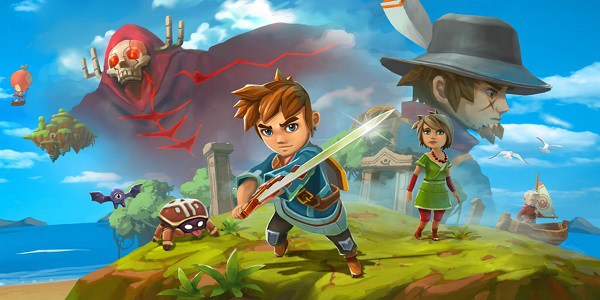
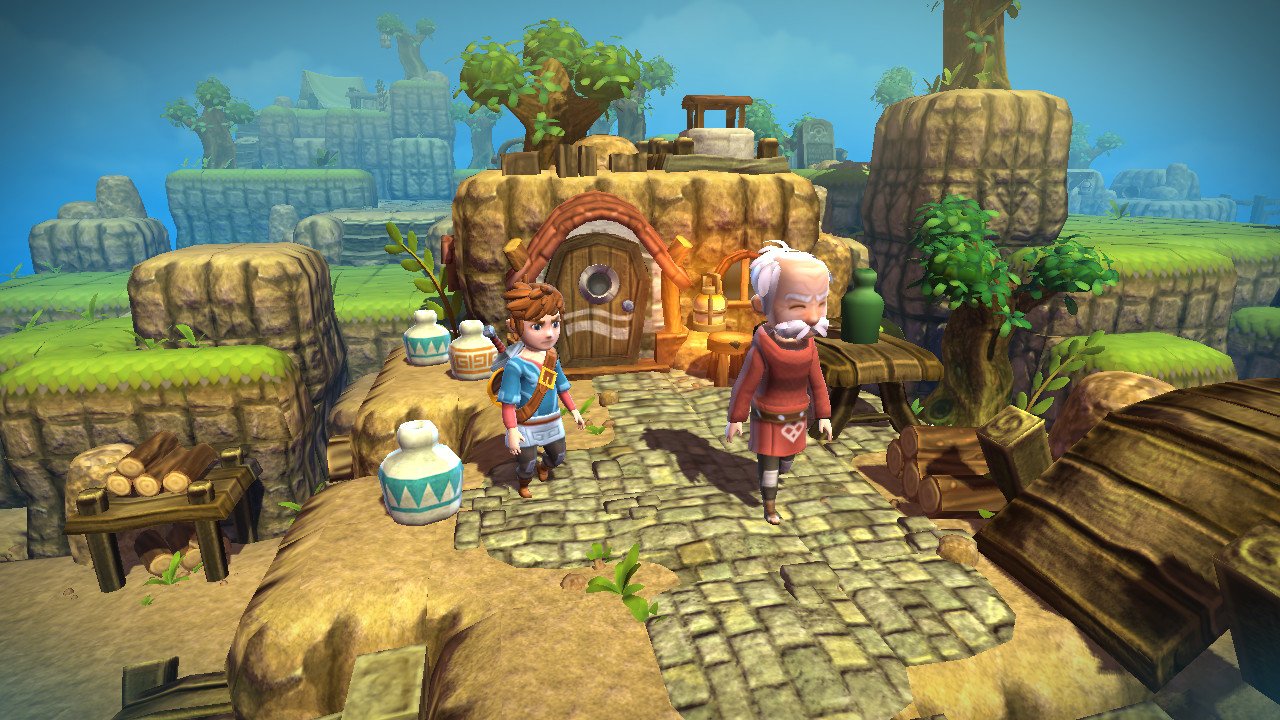
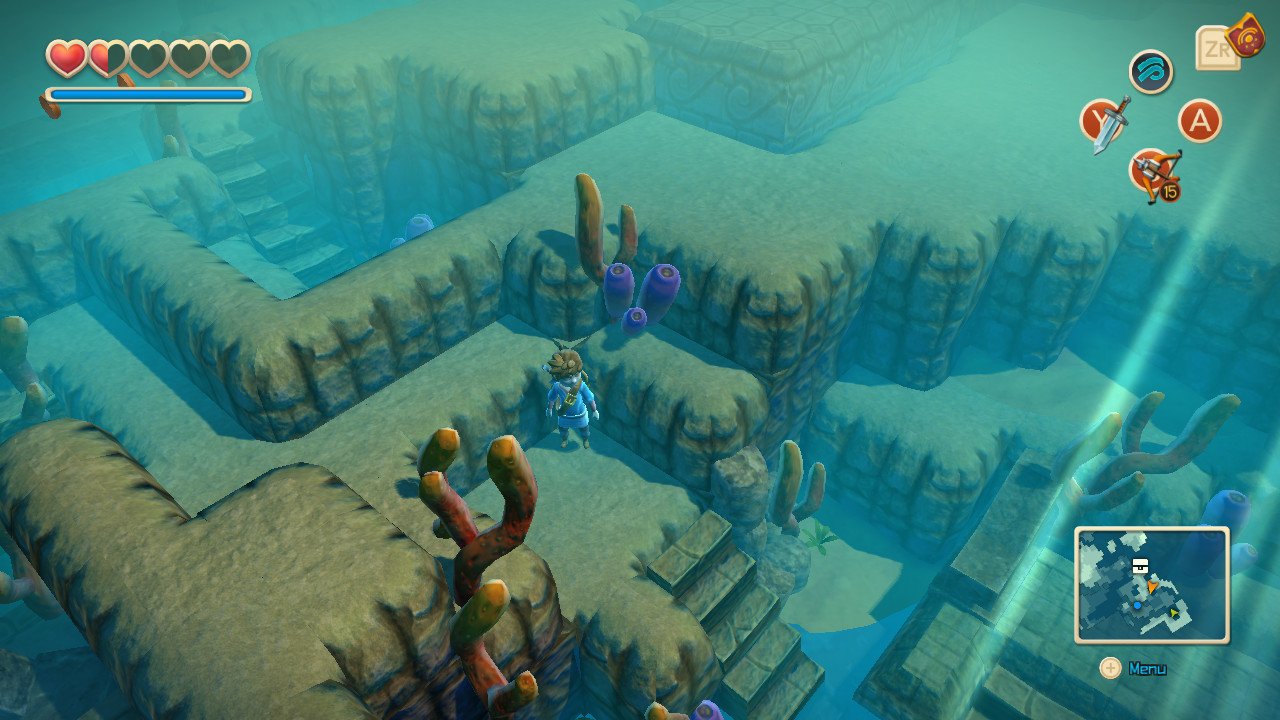
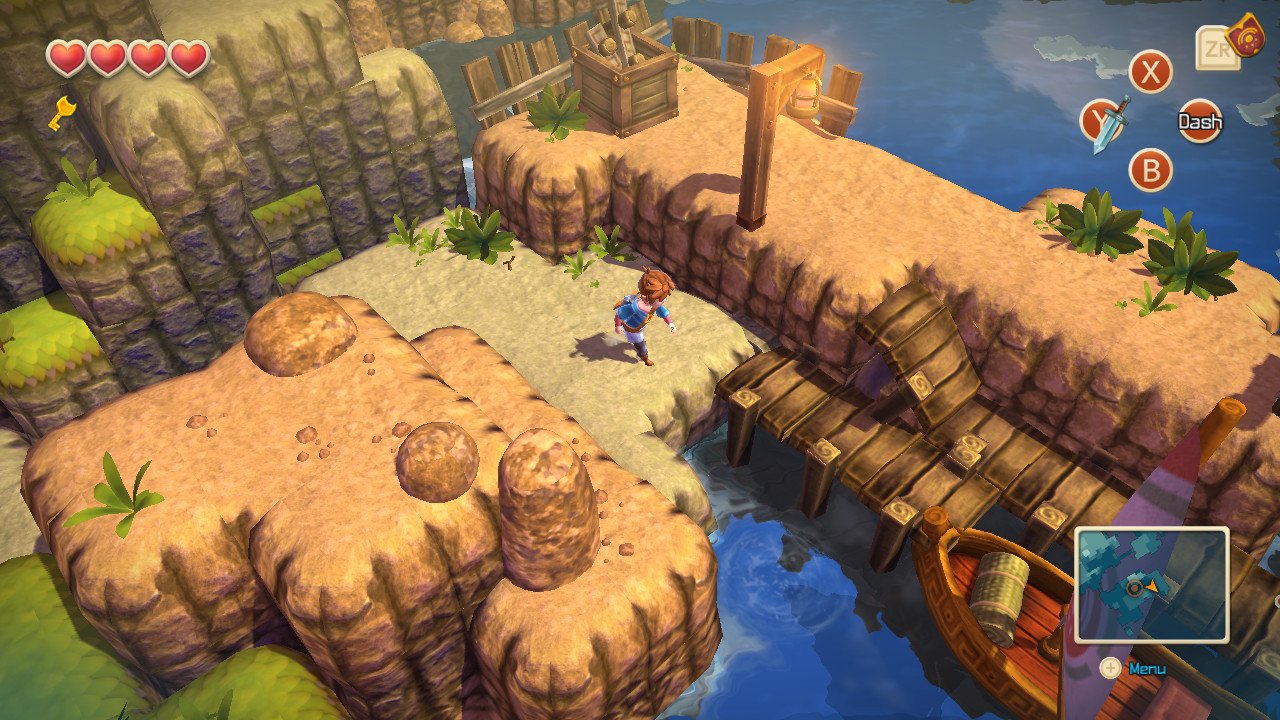
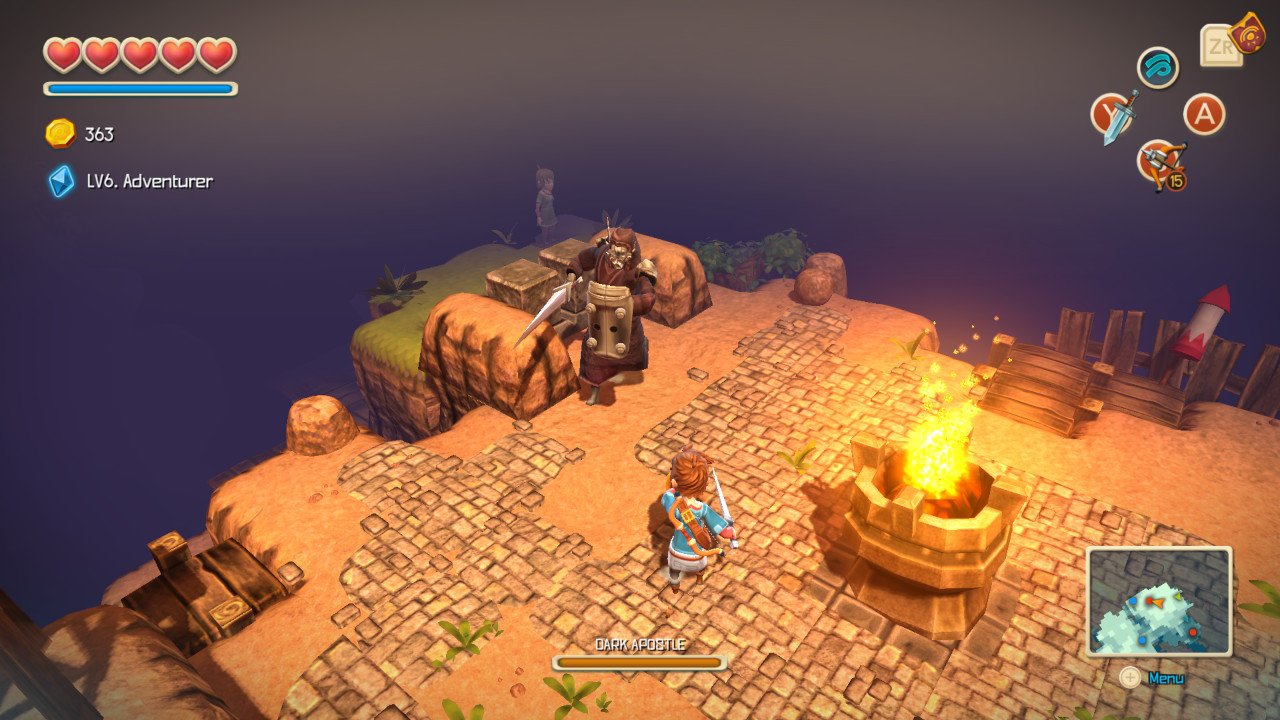
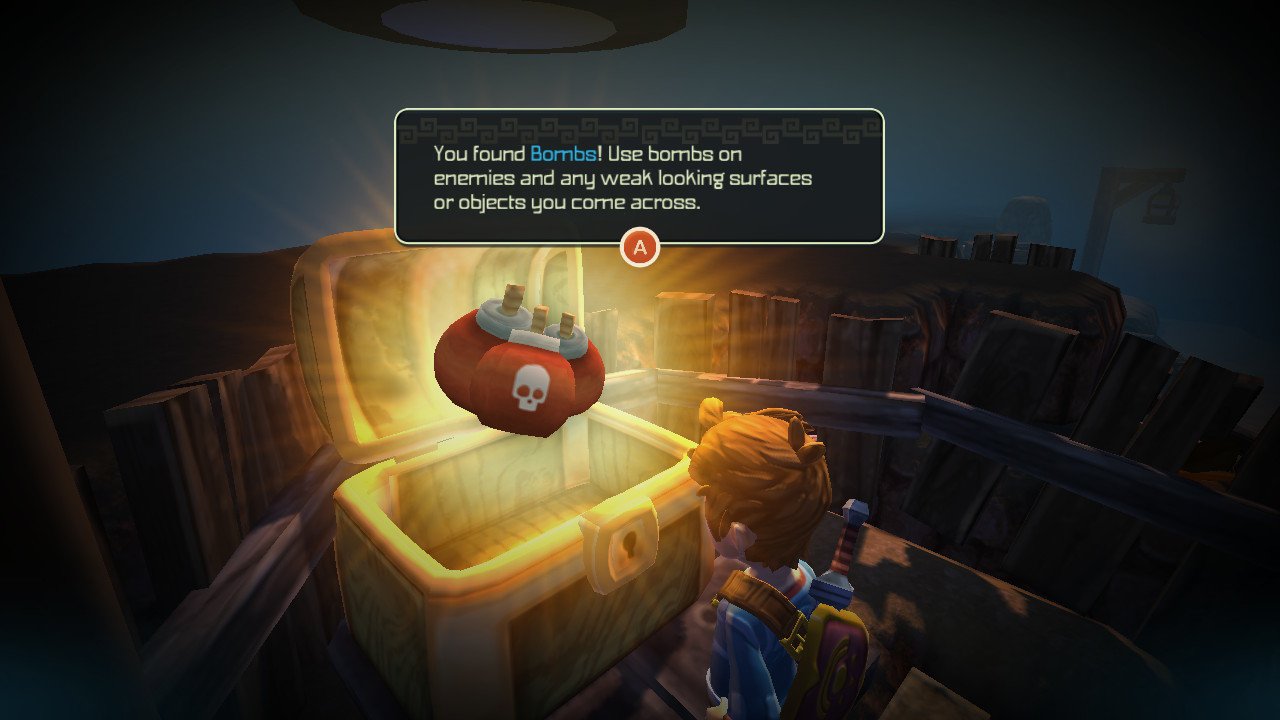
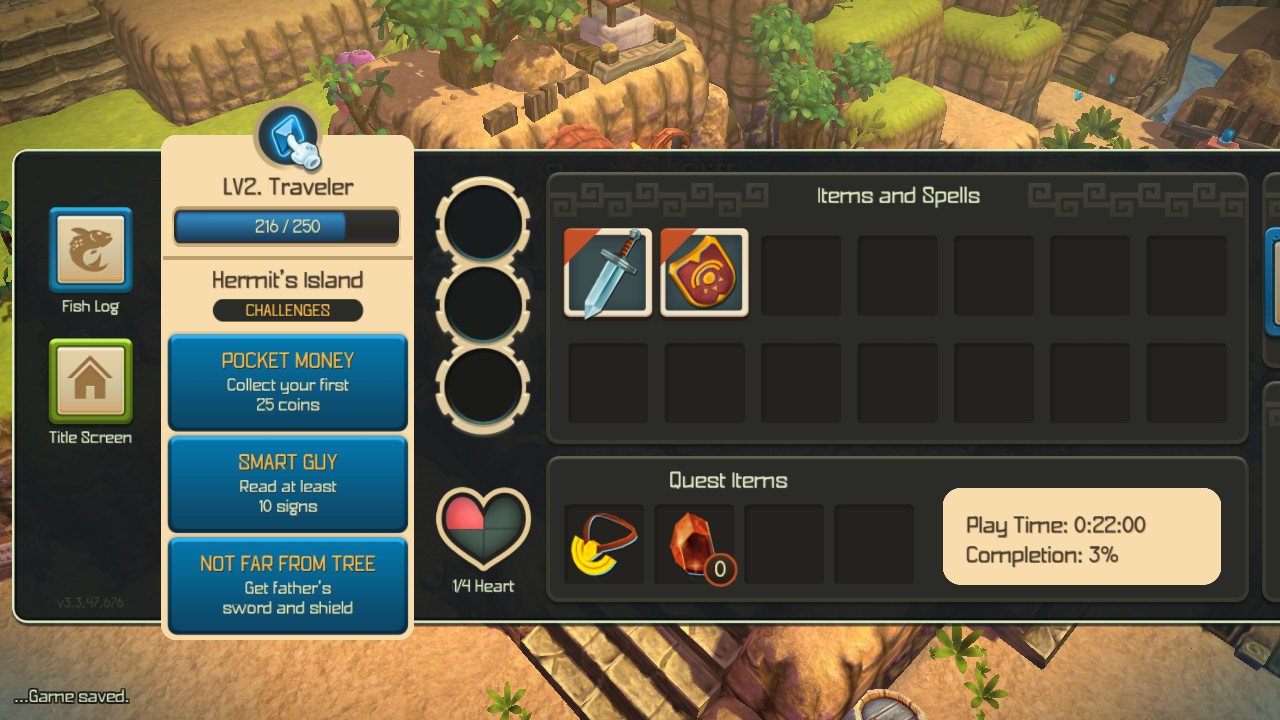
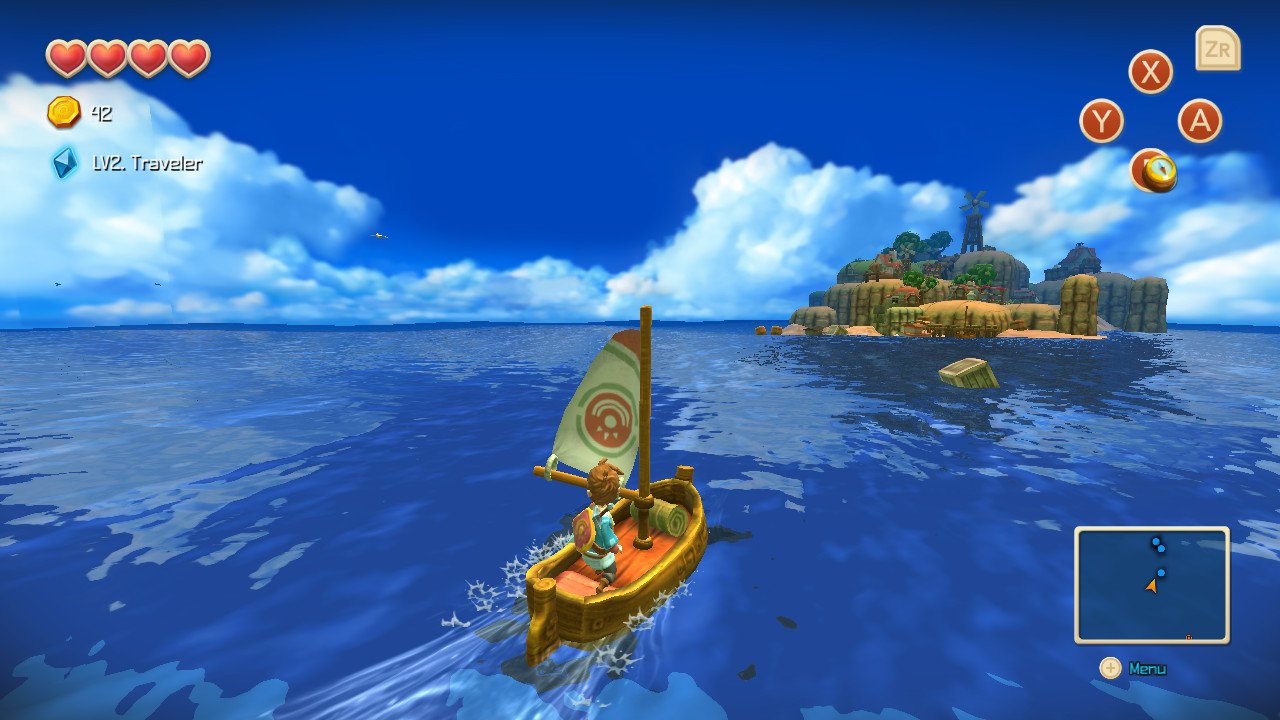
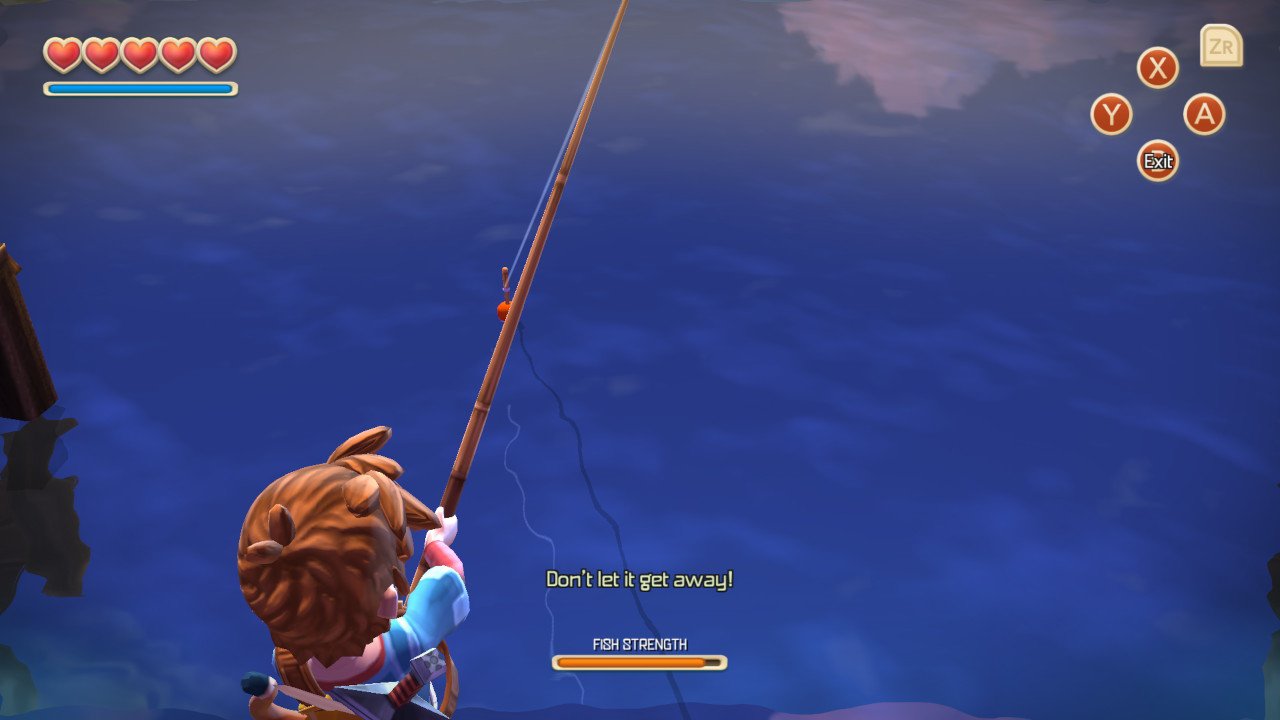





Published: Jul 5, 2017 07:58 pm